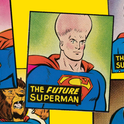Scarface, Brian de Palma's hysterically violent shoot-em-up, whose poster hangs on countless teenage bedroom walls, is nearly 30 years old. Initially the film was critically rebuked, but it has since become a cult classic, and last week saw the release of the Blu-Ray special edition. So did the critics miss something?
Scarface’s influence is beyond doubt. It has entered the pantheon of pop-cultural pastiche, that network of quotation and allusion that mean everyone has seen this film, even those who haven’t. The poster, with its dichromatic portraiture and red text, is a hefty reference point in the iconography of the modern gangster genre, and can be found emblazoned across official keyrings, shower curtains, M16 assault rifle lamps, and faux-mink blankets (“Let Tony Montana protect you from the cold”). The film has officially grossed $65m; ironically its pirated circulation is unknowably wide.
The gap between howling reviews and franchise gold is well proven—cynics might even claim its necessity. Over time, however, a curious critical dissension has grown around this cult classic. This is not surprising given the track records of the men involved in the film. Screenwriter Oliver Stone had already written the Oscar-winning Midnight Express by the time he came on board with Scarface, followed by the award-unfriendly Conan The Barbarian. He scripts broad humour, snappy dealer's code, and moments of insane chutzpah from anti-hero Tony Montana. But the story’s scope provides little by way of moral layering or character development. Montana arrives as unhinged and ruthless as he goes out. The gleefully quotable soundbites betray the glibness of the story surrounding them, over-salty seasoning in a mess of pottage.
Even on the film’s release there were protests at the skewed representation of Cubans, and that those parts were played almost exclusively by Italian-Americans. Women, primarily bikini bodies or junkies, are heavily circumscribed, mute or constantly absenting themselves, and Tony’s uncontrollable desire is embodied through violence, not his sexless conquest of Michelle Pfeiffer.
Director Brian de Palma’s voyeuristic, bloody excesses have always turned off many audiences and turned others on for the wrong reasons. (Although watching the film now, its most shocking element is the staggeringly ugly Giorgio Moroder synth score.)
Al Pacino’s leering, barking performance as aspirant cocaine baron Tony Montana, all Chanticleer swagger and sociopathic drive, is still divisive and still one of his best. Never given more space to chuck acres of scenery down his throat, he tyrannises every other character in the film, his outsized accent biting off words with utter disdain. In this role, Pacino is only ever held a hair’s breadth away from self-parody, and the sheer nerve of it is extraordinary.
The chief driver of the film’s legacy, twined around Al’s demented defiance, is the film’s place in American hip hop culture, which has appropriated it as a parable of minority empowerment. It is a frequent lyrical motif for many artists, including Jay-Z, Kanye West, Notorious BIG, Rick Ross, Raekwon and Nas. Like breakbeats, lines from the film are sampled, and album skits imitate favourite scenes. The film is also a personal touchstone for many more, its artwork studding the walls on episodes of MTV's Cribs like Klimt prints in bank managers’ bedrooms. In the 2003 documentary short Scarface: Origins of a Hip Hop Classic, P Diddy reveals with bizarre precision that he has watched the movie 63 times. Rappers adopt Scarface as a talisman, emulating his furious consumption and hunger for dominance.
It’s also easy to see the appeal of the narrative to the broadsheet mentality: an embattled, oppositional culture adopts the immigrant story of an antihero whose criminality is his only viable avenue of economic advancement. He comes to wield power in a hypocritical society he has outsmarted, yet remains an unaccepted outsider.
However, this creeping political cachet overstates the case and excuses too much. The film’s violence, misogyny and death-wish nihilism are just as much part of rap’s adoption of it and, if we impute artistic significance to a film, we can’t do so selectively. A film can be important without being great, or even good.
Apologists claim that the film’s excesses and moral vacuity are the reflection of its characters and milieu. That argument only takes us so far. For some, Pacino’s performance negotiates the rest of the journey. Others, however, will have more comprehensive criteria for greatness. Scarface will continue to endure, propped up by its cross-cultural currency: it is as quotable as Withnail & I or Wayne’s World, and just as silly.












